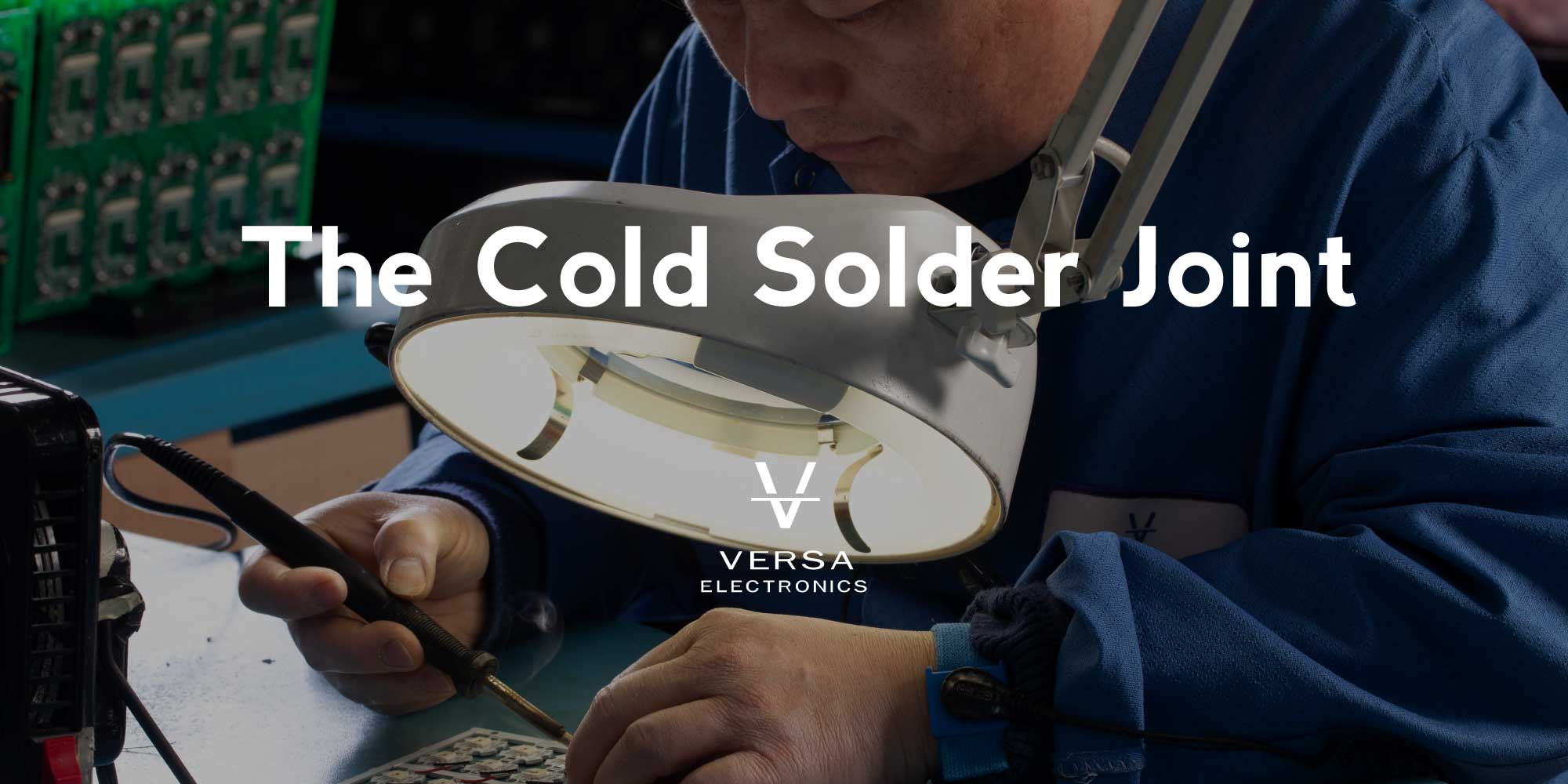Good solder joint formation is a prerequisite in electronics manufacturing. The failure of one small solder joint can compromise the functioning of an entire PCB and cause intermittent faults, which can significantly reduce the lifespan of any device and lead to expensive field failures.
Identifying and mitigating potential causes of solder joint failure can help avoid costly and difficult-to-resolve issues later in a product lifecycle. The most common soldering issue is typically the formation of a cold solder joint.
Improving solder joint formation is a skill that takes time to build and not without a few errors along the way. Here’s what you need to know about the dreaded cold solder joint and how you can avoid it.
What Is a Cold Solder Joint?
For the most part, a good solder joint will have a shiny finish to it, with a slightly concave contour. Ideally, it should slant by between 40 to 70 degrees and should not have too much solder on it.
A cold joint occurs whenever the solder doesn’t completely melt when soldering, forming an improper joint as a result. It’s often characterized by a rough or lumpy surface – cracks may also develop in the joint over time. A cold solder joint can adversely affect the quality of a board, causing increased electrical resistance at that joint or failure of the board in the worst-case scenarios.
Cold solder joints occur when the soldering iron is not heated up to a certain degree. As a result, its tip becomes incapable of melting the solder wire properly. That said, there are several other predisposing factors that can lead to a cold solder joint. These include:
- Disturbances, such as vibrations between the board and the component when the solder is cooling
- Solder alloy contamination
- Mismatched geometry of the components
- Improper reflow or wetting of solder at the joints
- Too high a soldering temperature results in premature breakdown of the flux
- Too low a soldering temperature at the joint results in incomplete wetting
A properly pre-heated soldering iron with enough power can help prevent cold solder joints. However, there are several practices that can help you avoid a cold joint.
- Try and minimize any vibration sources that may cause the solder to spread unevenly
- Always give the soldering iron enough time to heat up sufficiently – the peak temperature should be kept at least 15°C above the alloy’s melting point for at least 45 seconds
- Use as little solder alloy as feasibly possible
- Follow the manufacturers reflow profile specifications
- Allow the soldered joint sufficient time to fully solidify
- Use a good quality solder paste and carry out an alloy analysis occasionally to check for contaminants
- Store the soldering iron and alloy in an area free from dust and moisture to prevent contamination
Considering how common cold welds are, it’s just as important to know how to identify and repair cold solder joints.
How to Detect and Test Cold Solder Joints
Cold solder joints can be detected by visual checking the board. Because PCB solder joints are tiny, you may need to use a magnifying lens and a spotlight.
Look out for cold, dull, or whitish joints. Solder joints that are deformed or concave-shaped can also result from inadequate heating of the solder alloy. Such joints can easily crack or detach from the board when they encounter resistance at the joint. You can also check for overspills as they can result in short circuits, which can totally destroy the board.
An alternative method to locate a cold solder joint involves the use of a multimeter to check the resistance and continuity across a joint. One of the adverse impacts of a cold joint entails an increase in resistance. If the component being tested is not a resistor, then the reading should always be zero. However, if the reading is above zero, then you most likely have a cold joint on your hands. You can also switch the multimeter to continuity mode and connect the test terminals to either end of the joint. If you don’t hear a beep, that joint could use some repair.
How to Repair Cold Solder Joints
Solder joints can occur as a result of inadequate heating or vibration. For this reason, they can usually be repaired by simply reheating the joint until the solder melts and holding the board securely in a vice. Because many cold joints also suffer from having too much solder, you may need to draw off excess solder.
If your soldering iron seems to cool too fast, use a lead-free solder alloy instead, as they have higher working temperatures and tend to be less susceptible to mechanical fatigue. It’s important to note that using lead-free alloys makes it more difficult to detect cold solder joints. So, it’s good practice to avoid the formation of cold joints in the first place.
About The Author
 Tony Zuberbuehler is a Sales Manager at Versa Electronics with a focus on electronic contract manufacturing. Tony’s career in technology manufacturing spans 25+ years and has included roles as an engineering liaison, in purchasing and material management, manufacturing and planning, customer interfaces, and product fulfillment. Connect with Tony Z on LinkedIn.
Tony Zuberbuehler is a Sales Manager at Versa Electronics with a focus on electronic contract manufacturing. Tony’s career in technology manufacturing spans 25+ years and has included roles as an engineering liaison, in purchasing and material management, manufacturing and planning, customer interfaces, and product fulfillment. Connect with Tony Z on LinkedIn.





